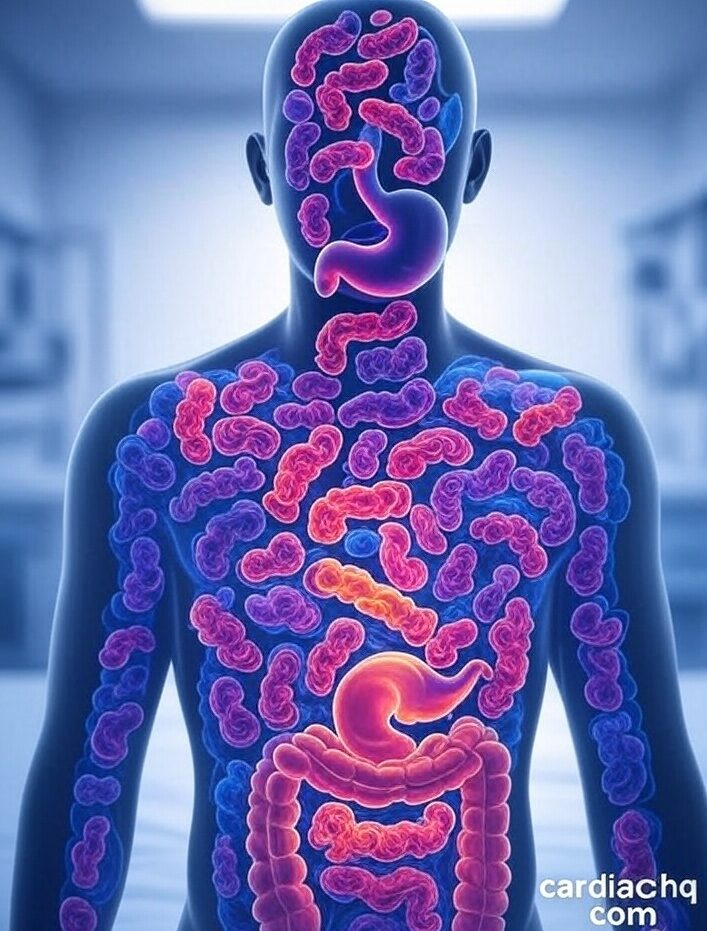The gut microbiome’s influence on autoimmune disease recovery in 2025 cannot be overstated, as emerging research reveals its pivotal role in modulating immune responses for conditions like lupus, rheumatoid arthritis, and multiple sclerosis. With dysbiosis—imbalances in gut bacteria—linked to disease progression, restoring microbiome health offers a promising avenue for autoimmune healing. This post explores how gut microbiota supports recovery, drawing on 2025 breakthroughs like microbiome-targeted therapies and fecal transplants. From understanding dysbiosis to practical strategies, we provide insights to enhance your autoimmune disease recovery. For a comprehensive overview, explore the “Key Factors Influencing Autoimmune Recovery” section of our Mastering Autoimmune Disease Recovery in 2025 . Let’s uncover how nurturing your gut can accelerate remission in 2025!

Section 1: How Gut Microbiome Influences Autoimmune Recovery
The gut microbiome, comprising trillions of bacteria, fungi, and other microbes, is central to autoimmune disease recovery by regulating immune tolerance and inflammation. In 2025, studies show that dysbiosis contributes to immune system dysfunction, allowing harmful bacteria like Enterococcus gallinarum to escape the gut and trigger autoimmunity in lupus and autoimmune liver disease. This “leaky gut” phenomenon permits microbial metabolites to enter the bloodstream, exacerbating flares.
Conversely, a balanced microbiome promotes short-chain fatty acids (SCFAs) production, which dampens inflammation and supports regulatory T cells essential for autoimmune healing. For rheumatoid arthritis, reduced Bifidobacterium levels correlate with disease severity, while enriched Prevotella species worsen symptoms. In 2025, genetic testing reveals how host-microbe interactions influence recovery, highlighting the microbiome’s role in personalized autoimmune disease recovery plans. For causes, see “What Causes Autoimmune Diseases? Unraveling the Mystery”.
Section 2: 2025 Breakthroughs in Microbiome Research for Recovery
2025 marks a milestone in microbiome research for autoimmune disease recovery, with studies emphasizing dysbiosis’s link to progression in systemic lupus erythematosus (SLE), type 1 diabetes (T1D), and inflammatory bowel disease (IBD). A Yale study demonstrates how gut pathobionts like E. gallinarum migrate to tissues, activating Th17 cells and IgG3 autoantibodies in lupus, but vaccination against them in mice reduced autoimmunity without broad immunosuppression.
Frontiers research synthesizes how Firmicutes and Bacteroidetes imbalances disrupt TLR signaling and inflammasomes, fueling diseases like RA and SLE. Emerging therapies include probiotics targeting Bifidobacterium to restore balance in T1D and UC, alleviating metabolic irregularities. Fecal microbiota transplantation (FMT) from healthy donors has shown promise in mouse models, normalizing microbiota and reducing symptoms in MS and AITD. These 2025 recovery strategies underscore the microbiome’s diagnostic potential for predicting flares. Track your gut health with cardiachq.com.
Section 3: Practical Strategies to Optimize Gut Health for Recovery
Optimizing gut health is a cornerstone of autoimmune disease recovery in 2025, focusing on diet, probiotics, and lifestyle to combat dysbiosis. An anti-inflammatory diet rich in fiber from leafy greens and fermented foods boosts beneficial bacteria like Blautia, producing SCFAs that enhance immune tolerance and reduce flares in IBD and psoriasis. Avoid triggers like processed sugars, which promote pathogenic growth.
Probiotics, such as Lactobacillus, have reduced levothyroxine needs in Hashimoto’s by restoring thyroid function. FMT, now refined for safety, transfers healthy microbiota to rebuild diversity, showing efficacy in RA and SLE models. Sleep and stress management are vital, as poor habits alter microbiome composition, increasing inflammation. In 2025, AI apps analyze stool tests for personalized interventions. Complement with “Best Diet Plans for Autoimmune Disease Management” and tools from cardiachq.com.
Section 4: Challenges and Future Directions in Microbiome Recovery
Despite progress, challenges in autoimmune disease recovery via microbiome modulation persist in 2025, including individual variability and antibiotic disruptions. Dysbiosis in early RA depletes Bacteroides, complicating therapies, while vaccine responses to microbiota show promise for abrogation. Future directions include targeted probiotics for B-cell regulation in SLE and MS, addressing understudied fungi and viruses. Join support groups for shared experiences, as per Living Well with Autoimmune Conditions: Daily Tips for 2025 . cardiachq.com aids in monitoring.
Conclusion
The gut microbiome is a linchpin in autoimmune disease recovery in 2025, with dysbiosis driving progression but targeted therapies offering reversal. From SCFAs’ anti-inflammatory effects to FMT’s restorative power, these insights pave the way for autoimmune healing. Embrace 2025 recovery strategies like probiotics and diet to foster remission. Consult experts and use cardiachq.com for tracking. Revisit Mastering Autoimmune Disease Recovery in 2025 for more. Share your gut health tips below!



